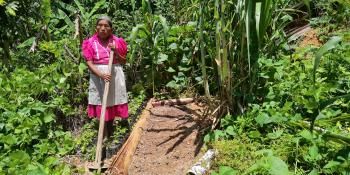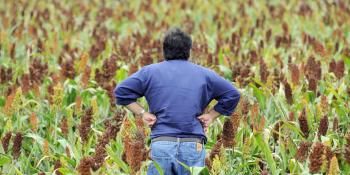New capacity to produce and communicate climate information services built in Tanzania
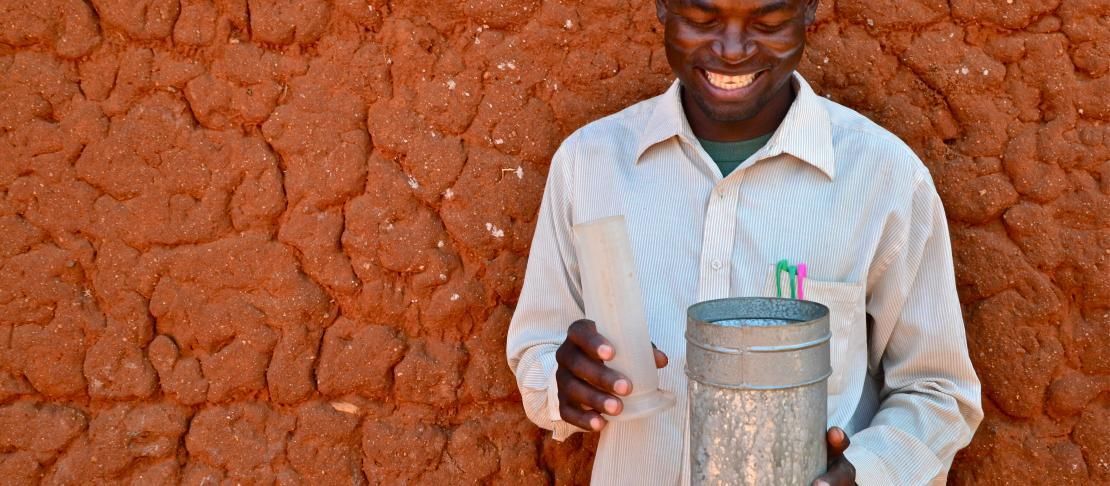
A training of agricultural research and extension staff in Tanzania enhanced capacity to produce and communicate climate and agricultural information, providing farmers and pastoralists with new tools to support their decision-making.
As one farmer put it nicely: "knowledge should precede action," said Dr. Ousmane Ndiaye of the Senegal Meteorological Service.
Smallholder farmers make many decisions that are affected by weather and climate every year. But most smallholders lack reliable information and tools that can help them weigh these decisions.
A new project seeks to fill this gap by building capacity of countries to produce and communicate climate information services for farmers, beginning in Tanzania and Malawi.
The right data for the job
Climate services begin with the right information products, tailored to fit the decisions of those who will use them. Seasonal climate forecasts are available on a regional scale for the Greater Horn of Africa, but these are far too broad brush to be useful to farmers at the field level.
To address this gap, the Climate Services Africa Adaptation Programme is going to the source of fine scale data needed to make more useful forecasts: national meteorological services. Project partner the International Research Institute for Climate and Society has built capacity within several African meteorological institutions to produce and analyze climate data on a 10-kilometer grid. This type of data allows meteorological services to make forecasts of climate conditions over the growing season at a scale appropriate for agricultural decision-making.
In September 2014, project partners the CGIAR Research Program on Climate Change, Agriculture and Food Security (CCAFS) and the World Food Program (WFP) took advantage of this new data, conducting a training at the Tanzania Meteorological Agency (TMA) on producing seasonal climate forecasts at the district level.
Dr. Ousmane Ndiaye from the Meteorological Agency of Senegal led the training on the IRI’s Climate Predictability Tool (CPT). The training enabled TMA staff to downscale the 2014 October-November-December seasonal rainfall forecast to the district level to better serve the decision needs of farmers and pastoralists.
It was clear to all of us that the current state of seasonal forecast outputs (covering a large zone) would be of little use for a farmer making decisions at a specific location. The training was thus on the basics of downscaling and the inherent challenge of doing it at a fine spatial scale,” said Dr. Ndiaye.
Downscaling of forecasts to the district level, while challenging, produces a product that is more usable for farmers. A district-level forecast picks up useful details that a prediction averaged over a larger area masks, such as pockets of wet areas within an overall dry forecast.
The forecast product is just one component of information intended to reach farmers, which also includes historical climate information and advisories on how it relates to farm management decisions.
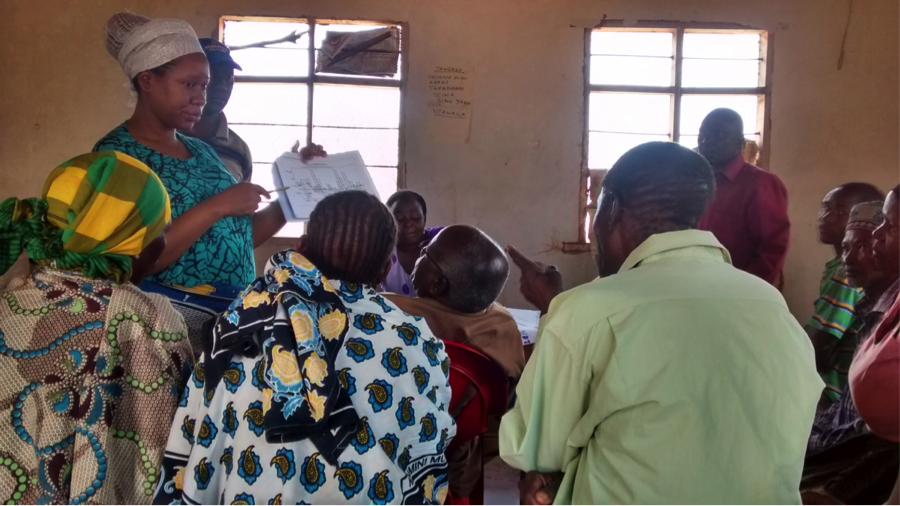
Mechlina merchades from tma interpreting historical climate information for farmers in mtumba, dodoma district, tanzania. Photo: G. Clarkson.
Informing decisions
The second phase of training was organized in Dodoma, Tanzania in October 2014 by staff from TMA, University of Reading, Jomo Kenyatta University of Agricultural Technology, WFP and Kings College of London, involving 31 participants mainly from the Ministry of Agriculture, Food Security and Cooperatives (MoAFC).
The majority of participants work at the village and ward level in Kiteto district, the first of ten districts that will receive training across Tanzania and Malawi. MoAFC staff were joined by colleagues from the district level and from NGOs and other service providers, including input stockists.
During the training workshop, national agricultural extension officers worked together with TMA forecasters to interpret historical climate information including annual rainfall totals, rainy season start dates, length of season, temperature data and all-important dry spells that affect crops, livestock and livelihoods.
The historical climate information provided by TMA was a sample of what is expected when the training rolls out across Tanzania and Malawi, providing farmers with a suite of “seamless” climate forecasts from historical trend analyses to seasonal forecasts, monthly forecast updates, weekly and real-time information products and related advisories. The GFCS project aims to conduct such trainings in a total of ten districts across Tanzania and Malawi in the coming year.
National agricultural extension officers were introduced to different participatory planning tools (resource allocation maps, participatory budgets, livelihoods options matrices, crop option tables etc.) alongside the probabilities of success and risks for specific options. Through such tools these climate services communication “intermediaries” can facilitate farmer decision-making, helping farmers to weigh different crop, livestock or livelihood options and what is best suited to their individual circumstances.
Following initial planning, the seasonal forecast (which intermediaries were trained in interpreting) was also presented for communication to farmers, who will also receive short-term forecasts by SMS throughout the season.
Researchers are combining this participatory method developed by the University of Reading, known as the ‘Participatory Integrated Climate Services for Agriculture’ approach, with insights from other CCAFS climate services communications efforts. These include a project that worked with meteorological services and rural radio to reach over two million farmers in Senegal, and multiple projects in Kenya and Tanzania.
Throughout the week, the intermediaries had plenty of opportunities to practice the tools they would be using including a field day with farmers in nearby Mtumba, with farmers dismissing any lingering doubts about their capacity to understand the climate information interpreted by the intermediaries.
This was reinforced the following week during an evaluation visit to two villages near Dodoma where smallholders had received a pilot training in November 2013. Farmers clearly remembered the key elements of the training, had been collecting their own rainfall data and discussed changes that they had made to the varieties they had grown and the timing of planting.
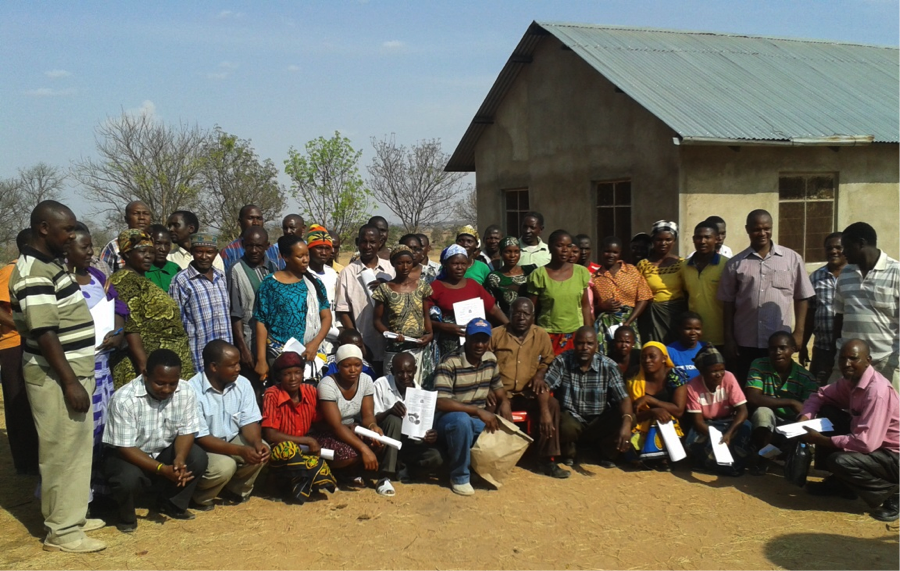
The “missing link”
Most farmers and pastoralists today lack reliable information and decision-making tools that can help them manage their agriculture production and livelihood strategies. Training sessions for farmers conducted by researchers have proven to be an effective way to communicate probabilistic seasonal forecast and historical climate information about past variability, but are difficult to scale up.
By training communications intermediaries that already work with farmers, climate services can more readily reach large numbers of farmers, with intermediaries serving as the “missing link” between climate information producers and farmers on the ground.
The GFCS project is one piece of the puzzle within CCAFS’ strategy to scale up climate services for millions of farmers in the coming decade.
Learn more:
Blog stories about Climate Services

